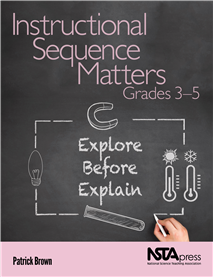All 5E resources
Journal Article
Qualitative Analysis of Ray Optics in a College Physics Laboratory: A 5E Lesson
This paper describes an alternative approach to teaching and learning practices in an undergraduate physics laboratory. The instructor plans and implements the 5E instructional model into the laboratory instruction. The article includes an example ...
By Ozden Sengul
Journal Article
A physics laboratory instructor used action research to effectively implement a 5E instructional approach, which incorporated scientific practices. The instructor explored how to integrate the instructional approach into practice, challenges presen...
By Ozden Sengul and Renee Schwartz
Journal Article
By Kathleen Schenkel, Selena Bliesener, Angela Calabrese Barton, and Edna Tan
NSTA Press Book
Instructional Sequence Matters, Grades 3–5: Explore Before Explain
Instructional Sequence Matters, Grades 3–5 is a one-stop resource that will inspire you to reimagine how you teach science in elementary school. The book discusses two popular approaches for structuring your lessons: POE (Predict, Observe, and Expl...
By Patrick Brown
eBook
Instructional Sequence Matters, Grades 3–5: Explore Before Explain (e-book)
Instructional Sequence Matters, Grades 3–5 is a one-stop resource that will inspire you to reimagine how you teach science in elementary school. The book discusses two popular approaches for structuring your lessons: POE (Predict, Observe, and Expl...
Book Chapter
Bee-ing There for Bees: Are Bees Disappearing?
In this lesson, suggested for grades K-2, students learn about bee anatomy and behavior. They develop and test bee models to demonstrate their understanding of the interrelationships between plants and pollinators. After examining some of the controv...
Blog Post
A Physics Teaching Approach That Supports Real-World Science by Matt Holsten
Traditional physics education can leave many students confused, bored, or without the conceptual understanding of the equations they are required to memorize. I prefer an approach that allows students to use evidence to express, clarify, and justify ...
By Cindy Workosky



